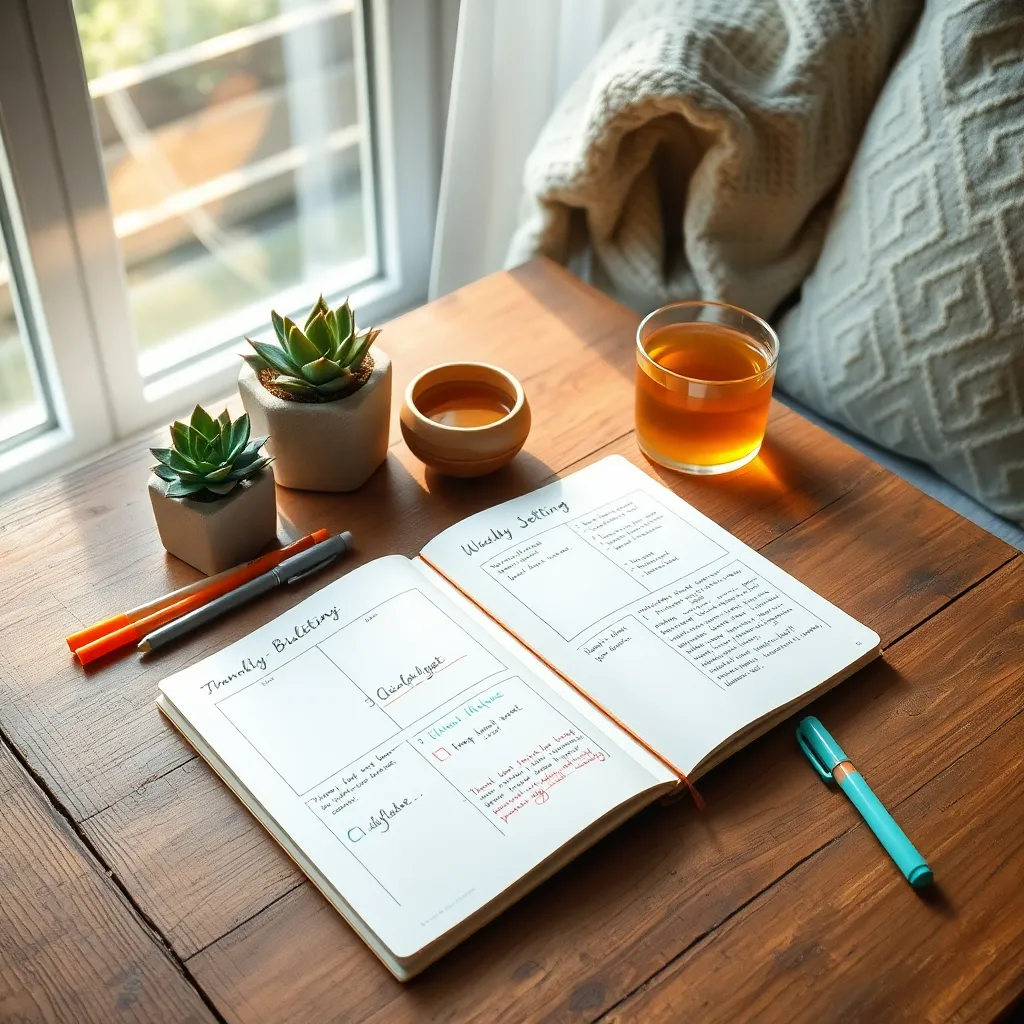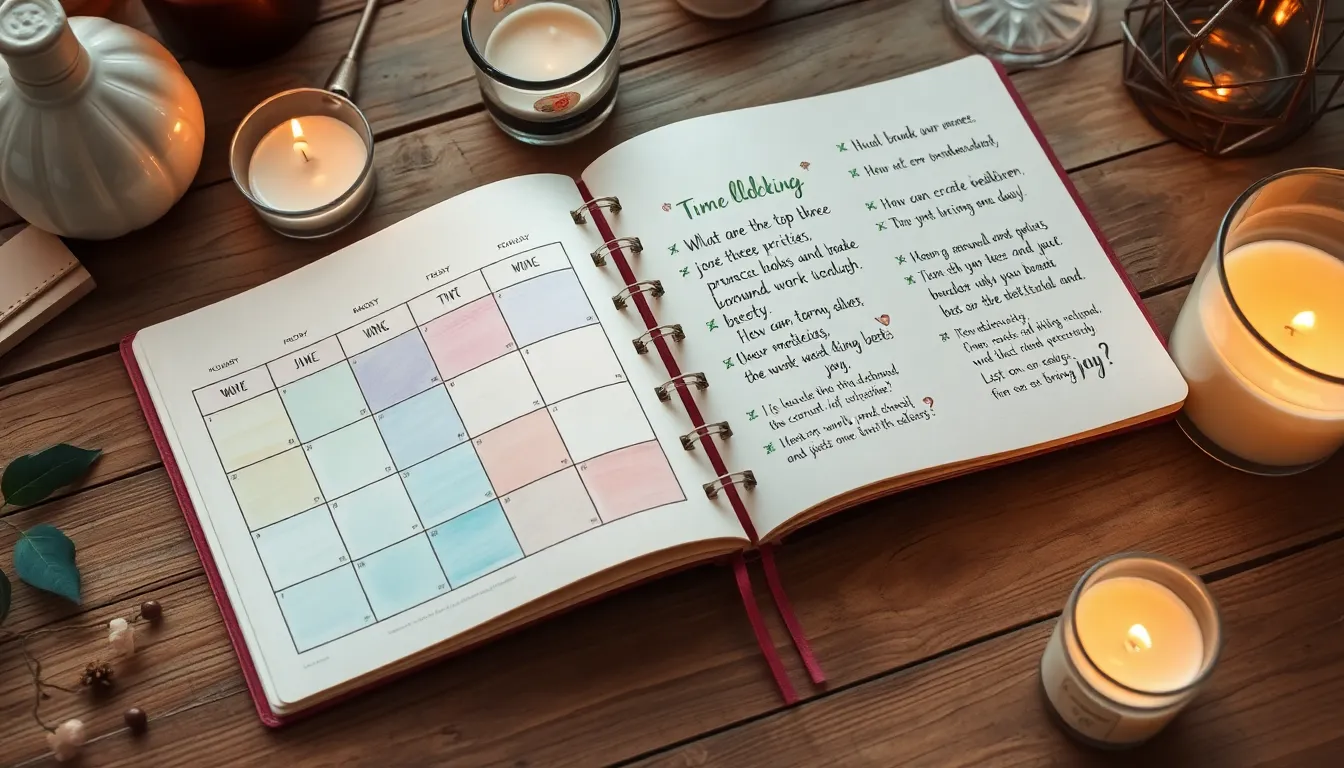Time blocking transforms chaos into calm, helping you reclaim control over your day. This guide’s templates offer simplicity, boosting productivity and ensuring you nurture both work and well-being effortlessly.
Dive in to discover practical layouts tailored for your unique needs. You’ll gain clarity and balance, making each moment purposeful and stress-free. Let’s unlock the power of mindful scheduling together.
Designate Blocks for Relaxation Time

Ensure you set aside specific time blocks dedicated solely to relaxation. Use this time to journal with prompts like:
- “What brings me peace today?”
- “How can I nurture my well-being?”
Start each block by embracing stillness, allowing thoughts to flow freely. This practice cultivates mindfulness and enhances your self-care routine, making relaxation a non-negotiable priority.
Allocate Morning Journaling Sessions

Begin your day with a brief journaling session. Set aside just 5-10 minutes to reflect. This time can anchor your morning, providing clarity and focus.
Use simple prompts to kickstart your thoughts. Try:
- “Today, I am grateful for…”
- “My intention for today is…”
These guide your mind towards positivity and purpose.
Incorporate Self-Care Breaks

Integrate brief self-care breaks into your day. Use these moments to jot down thoughts or feelings, enhancing mindfulness. Quick journaling prompts:
- What am I grateful for today?
- How does my body feel right now?
Regular, short pauses can rejuvenate your mind and improve focus. During breaks, write one sentence about a positive experience. This simple act boosts happiness and reduces stress.
Set Evening Reflection Periods

End your day with a gentle reflection. Set aside 10 minutes to journal before bed, helping you unwind and gain clarity. Use this time to focus on gratitude or to process the day’s events.
Experiment with prompts like:
- What three things am I grateful for today?
- What went well today, and why?
These can foster a positive mindset and peaceful rest.
Plan Weekly Goal-Setting Blocks

Allocate specific time blocks each week for setting goals. Use this dedicated space to align your actions with your intentions, ensuring you stay focused and motivated.
During these sessions, ask yourself:
- What is one goal I want to achieve this week?
- What steps can I take to get there?
Reflect and adjust as needed, keeping your progress in view.
Conclusion: Creating Beautiful Outdoor Spaces
In exploring the art of time blocking for nurturing relationships, we’ve delved into five essential concepts: prioritizing quality time, setting boundaries, synchronizing schedules, incorporating flexibility, and fostering intentional communication. By integrating these elements, couples can transform their connection into a well-balanced and thriving partnership.
As your next step, choose one time-blocking idea that resonates most with your relationship needs and implement it this week. Whether it’s carving out a dedicated date night or a daily check-in, taking this action will set a positive precedent for shared growth and understanding.
Remember, successful relationships are built on intentional actions and consistent effort. Bookmark this article now to ensure you have these valuable strategies at your fingertips whenever you need a refresher or a boost of inspiration.
Looking ahead, by embracing these practices, you are paving the way for a more harmonious and fulfilling relationship. With time and dedication, you can cultivate a partnership that not only survives the test of time but thrives with every passing day. Keep this guide close, and let it be your compass on the journey to enduring love and connection.

